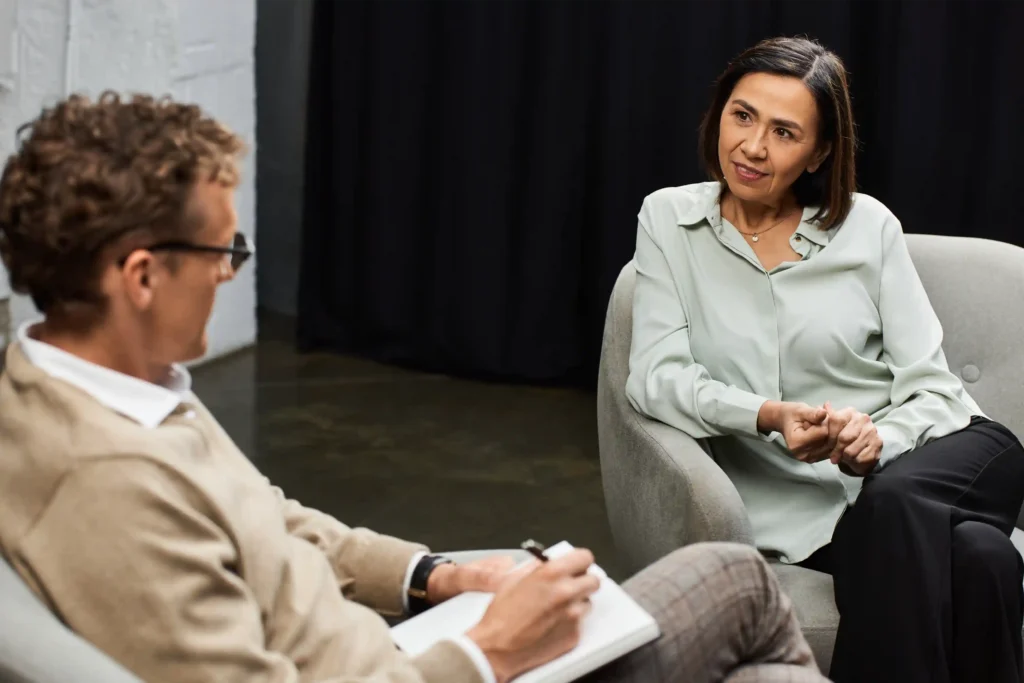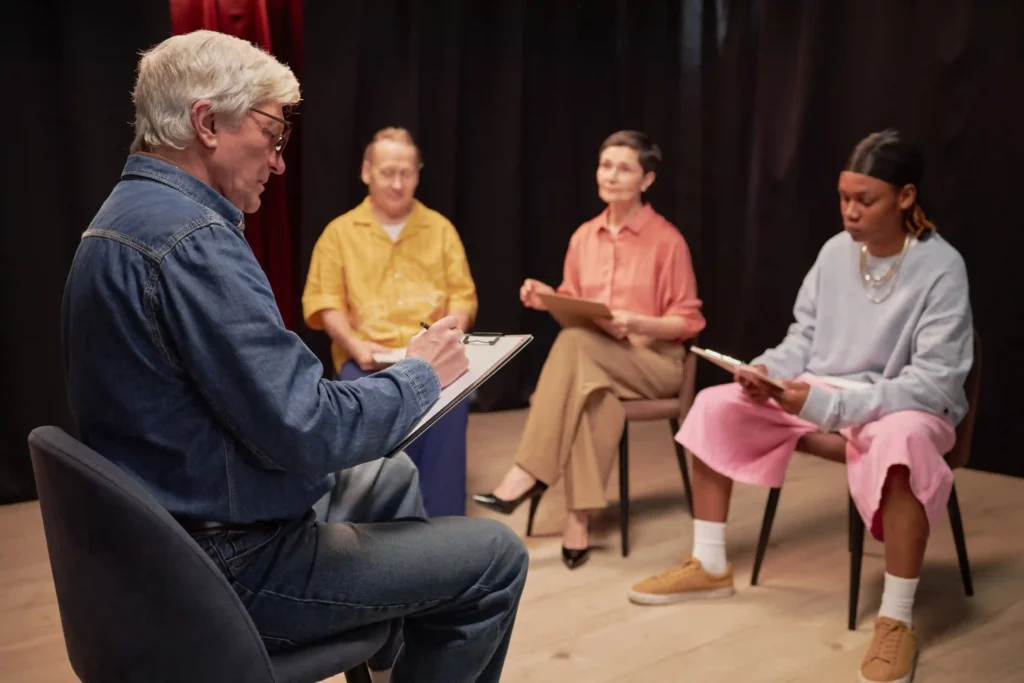Exploring Healing Through Action, Connection, and Creativity
In the world of therapy, words are often the primary tool for healing. But what happens when words alone are not enough? Enter psychodrama — a powerful, experiential therapeutic approach that brings emotions, relationships, and memories to life through action.
By embodying experiences rather than merely describing them, participants access deeper emotional truths that can transform understanding and release long-held tension. This makes psychodrama especially effective for those who struggle to express themselves verbally or feel “stuck” in traditional talk therapy.
The Origins of Psychodrama: Healing Through the Stage
Psychodrama was founded by Dr. Jacob L. Moreno in the early 20th century, a visionary who believed that “the body remembers what the mind forgets.”
Drawing from his background in theater, philosophy, and group dynamics, Moreno developed psychodrama to help people externalize their inner conflicts through enactment. His early experiments in Vienna evolved into a method that integrated psychology, sociology, and the arts — bridging emotion, cognition, and creativity in one cohesive process.
Over the decades, psychodrama has influenced countless therapeutic models, including Gestalt therapy, family constellations, and drama therapy, cementing its place as a cornerstone of experiential psychotherapy.

The Core Techniques of Psychodrama
Psychodrama employs a range of interactive techniques to access emotional depth and perspective:
- Role Reversal – Participants step into another person’s role (e.g., a parent, friend, or inner self) to gain empathy and understanding.
- Doubling – Another participant voices the unspoken thoughts or emotions of the protagonist, helping bring subconscious material to awareness.
- Mirroring – The protagonist watches another participant replay their behavior, offering powerful insight and emotional reflection.
These methods allow individuals to move beyond storytelling into embodied experience, transforming awareness through action.
The Psychodrama Stage: Roles and Structure
Every psychodrama session includes several key components that create both structure and safety:
- The Director (Therapist): Guides the session, sets boundaries, and ensures emotional safety.
- The Protagonist: The focus of the enactment — the person exploring their personal issue or story.
- The Auxiliaries: Other participants who take on roles in the protagonist’s story.
- The Audience: Group members who witness and later offer reflective feedback.
This structured environment mirrors real-life dynamics while maintaining therapeutic safety and distance, allowing exploration without retraumatization.
When Talk Isn’t Enough: The Power of Action
Traditional talk therapy relies on cognition and language. Psychodrama, in contrast, activates the body, senses, and imagination, engaging multiple levels of experience simultaneously.
Why Psychodrama Can Be Transformative:
- Emotional Release:
Acting out emotions allows catharsis — a physical and emotional release that bypasses cognitive barriers. - New Perspectives:
Reenactment often reveals unconscious patterns and insights, helping participants see their situations differently. - Empathy & Connection:
Stepping into another person’s role fosters deep understanding and relational healing. - Breaking Defenses:
For those who resist verbal processing, the embodied, creative nature of psychodrama offers a safer route to vulnerability.

Inside a Psychodrama Session: From Warm-Up to Integration
A typical psychodrama session unfolds in three main stages:
1. Warm-Up Phase
The group engages in gentle movement, trust-building, or imaginative exercises to create psychological safety. This phase helps participants attune to one another and prepare emotionally for deeper work.
2. Enactment Phase
The protagonist selects a scene — past, present, or imagined — to explore. With guidance from the director, auxiliaries play roles that bring this story to life. The scene may involve dialogues with real or symbolic figures (like “Fear,” “Hope,” or “My Inner Child”).
This process externalizes inner conflicts, allowing the protagonist to interact with them from a new vantage point.
3. Sharing and Integration
After the enactment, the group reflects on what emerged. Audience members share resonant feelings (not advice), creating empathy and connection.
The director then helps participants ground themselves, reflect, and integrate insights into everyday life. This ensures that emotional learning translates into personal growth.
The Therapist’s Role: Safety, Sensitivity, and Skill
The psychodrama therapist — often referred to as the director — is both facilitator and creative guide.
They balance safety and challenge, knowing when to invite emotional risk and when to provide grounding.
A skilled therapist ensures that psychodrama remains both therapeutically deep and emotionally safe, preventing re-traumatization while maximizing self-discovery.
Their responsibilities include:
- Establishing trust, confidentiality, and boundaries.
- Reading emotional cues and regulating intensity.
- Encouraging reflection and integration.
Applications of Psychodrama Across Settings
Psychodrama’s adaptability allows it to thrive in diverse environments:
1. Clinical & Mental Health Settings
Used for trauma recovery, anxiety, depression, addiction, and grief. Research shows that experiential therapies like psychodrama activate both hemispheres of the brain, facilitating emotional integration and reducing physiological stress responses.
2. Education & Schools
Students engage in role-play to navigate social challenges, bullying, and conflict resolution. This enhances empathy, communication, and emotional intelligence — key components of social-emotional learning.
3. Corporate & Organizational Training
Companies use psychodrama-based workshops to improve team dynamics, leadership skills, and creative problem-solving. It fosters emotional intelligence and authentic communication in the workplace.
4. Correctional & Rehabilitation Programs
In prison settings, psychodrama helps individuals explore accountability and emotional regulation, promoting rehabilitation and empathy. Studies indicate it can lower recidivism rates by enhancing self-awareness and relational capacity.

Psychodrama’s Relevance in Modern Therapy
Today, psychodrama continues to evolve, integrating insights from neuroscience, trauma therapy, and somatic psychology.
Its focus on embodied experience aligns with modern understandings of how trauma is stored in the body — echoing the work of researchers like Bessel van der Kolk (The Body Keeps the Score).
As mental health professionals increasingly recognize the limits of purely verbal interventions, psychodrama offers a bridge between mind and body, thought and emotion, past and present.
Psychodrama-informed Comes to Vancouver A New Space for Experiential Healing
Baraka Ontology and Counseling is also bringing psychodrama to the West Coast, offering Vancouver’s psychodrama-informed experiential therapy group.
These sessions invite participants to explore their inner worlds through creativity, connection, and enactment — within a safe, supportive therapeutic community.
Led by experienced clinicians, the group provides a rare opportunity to experience the transformative depth of psychodrama right here in Vancouver.
Naghmeh is the main facilitator, she received her psychodrama training through the psychodrama section of the international association for group psychotherapy and group processes (IAGP) and Orsolya is the co-facilitator/assistant.
for more information you can check the link below!
https://barakaocc.com/services/psychodrama-group-therapy/
This medium-sized, experiential therapy group welcomes individuals seeking growth, emotional clarity, and deeper self-awareness through creative expression.
Whether you’re a mental health professional, a student of psychology, or someone on a personal journey of healing — this is a chance to witness and participate in the living theatre of transformation.
Final Reflections: The Theatre of Healing
When words fall short, psychodrama speaks through movement, voice, and imagination.
It invites people to live their stories rather than simply tell them — to rewrite old narratives and rehearse new possibilities.

At Baraka Ontology and Counselling, psychodrama becomes not just therapy, but a communal act of creation — where healing, insight, and authenticity emerge through action.
For anyone seeking to go beyond words and reconnect with the essence of being, psychodrama offers a powerful path toward wholeness.


Responses